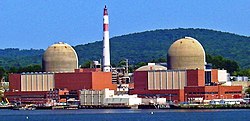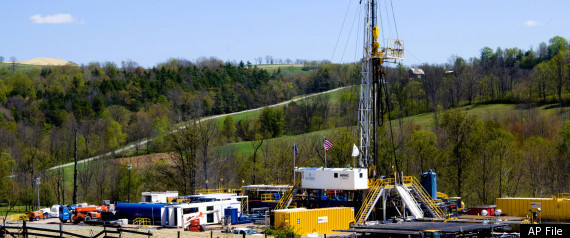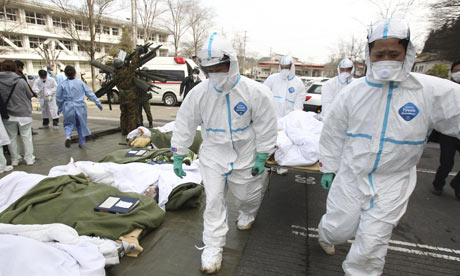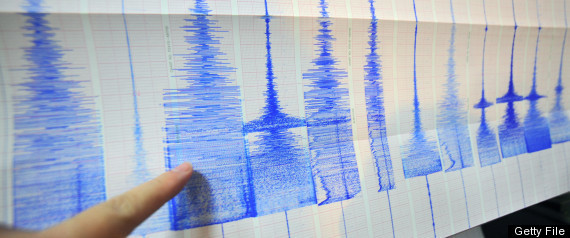 The unfolding disaster at the Fukushima nuclear plant follows decades of falsified safety reports, fatal accidents and underestimated earthquake risk in Japan's atomic power industry.
The unfolding disaster at the Fukushima nuclear plant follows decades of falsified safety reports, fatal accidents and underestimated earthquake risk in Japan's atomic power industry.
The destruction caused by last week's 9.0 earthquake and tsunami comes less than four years after a 6.8 quake shut the world's biggest atomic plant, also run by Tokyo Electric Power Co. In 2002 and 2007, revelations the utility had faked repair records forced the resignation of the company's chairman and president, and a three-week shutdown of all 17 of its reactors.
Japan Nuclear Disaster Caps Decades of Faked Reports, Accidents
Experts Had Long Criticized Potential Weakness in Design of Stricken Reactor
 The warnings were stark and issued repeatedly as far back as 1972: If the cooling systems ever failed at a “Mark 1” nuclear reactor, the primary containment vessel surrounding the reactor would probably burst as the fuel rods inside overheated. Dangerous radiation would spew into the environment.
The warnings were stark and issued repeatedly as far back as 1972: If the cooling systems ever failed at a “Mark 1” nuclear reactor, the primary containment vessel surrounding the reactor would probably burst as the fuel rods inside overheated. Dangerous radiation would spew into the environment.
G.E. began making the Mark 1 boiling-water reactors in the 1960s, marketing them as cheaper and easier to build — in part because they used a comparatively smaller and less expensive containment structure.
Most Vulnerable U.S. Nuclear Plants
 According to Biff Bradley, the director of risk assessment for the Nuclear Energy Institute, it's almost impossible to try to rank the absolute safety risk of a plant, due to the number of variables that would be involved in any sort of direct comparison.
According to Biff Bradley, the director of risk assessment for the Nuclear Energy Institute, it's almost impossible to try to rank the absolute safety risk of a plant, due to the number of variables that would be involved in any sort of direct comparison.
But given that some fundamental risks are obvious and plant safety records are public, relative risks can be measured. For instance, nearly half of the 104 nuclear reactors operating in the United States are close to major fault lines, including the Diablo Canyon and San Onofre plants located near California's San Andreas Fault. The Indian Point nuclear power plant in New York is less than two miles from the Pampano fault line, and sits within 50 miles of more than 17 million people.
Arkansas Earthquakes Decline After 'Fracking' Injection Well Closures
 The number and strength of earthquakes in central Arkansas have noticeably dropped since the shutdown of two injection wells in the area, although a state researcher says it's too early to draw any conclusions.
The number and strength of earthquakes in central Arkansas have noticeably dropped since the shutdown of two injection wells in the area, although a state researcher says it's too early to draw any conclusions.
"We have definitely noticed a reduction in the number of earthquakes, especially the larger ones," said Scott Ausbrooks, geohazards supervisor for the Arkansas Geological Survey. "It's definitely worth noting."
What will spark the next Fukushima?
 The gung-ho nuclear industry is in deep shock. Just as it and its cheerleader, the International Atomic Energy Agency, were preparing to mark next month's 25th anniversary of the Chernobyl accident with a series of self-congratulatory statements about the dawning of a safe age of clean atomic power, a series of catastrophic but entirely avoidable accidents take place in not one but three reactors in one of the richest countries of the world. Fukushima is not a rotting old power plant in a failed state manned by half-trained kids, but supposedly one of the safest stations in one of the most safety-conscious countries with the best engineers and technologists in the world.
The gung-ho nuclear industry is in deep shock. Just as it and its cheerleader, the International Atomic Energy Agency, were preparing to mark next month's 25th anniversary of the Chernobyl accident with a series of self-congratulatory statements about the dawning of a safe age of clean atomic power, a series of catastrophic but entirely avoidable accidents take place in not one but three reactors in one of the richest countries of the world. Fukushima is not a rotting old power plant in a failed state manned by half-trained kids, but supposedly one of the safest stations in one of the most safety-conscious countries with the best engineers and technologists in the world.
Politics Seen to Limit E.P.A. as It Sets Rules for Natural Gas
 When Congress considered whether to regulate more closely the handling of wastes from oil and gas drilling in the 1980s, it turned to the Environmental Protection Agency to research the matter. E.P.A. researchers concluded that some of the drillers’ waste was hazardous and should be tightly controlled.
When Congress considered whether to regulate more closely the handling of wastes from oil and gas drilling in the 1980s, it turned to the Environmental Protection Agency to research the matter. E.P.A. researchers concluded that some of the drillers’ waste was hazardous and should be tightly controlled.
But that is not what Congress heard. Some of the recommendations concerning oil and gas waste were eliminated in the final report handed to lawmakers in 1987.
Is fracking causing Arkansas earthquakes?
 The U.S. Geological Survey has recorded three earthquakes in Arkansas near the small town of Greenbrier, north of Little Rock.
The U.S. Geological Survey has recorded three earthquakes in Arkansas near the small town of Greenbrier, north of Little Rock.
A preliminary 4.7 magnitude quake was recorded at 11 p.m. Sunday night, and according to the AP, was felt in four other states. A 3.8 quake followed just 18 minutes later, with a third 3.6 magnitude earthquake recorded at 2:46 a.m. Monday morning. No damage or serious injuries have been reported.
More Articles...
Page 22 of 42

 Energy Glance
Energy Glance






























